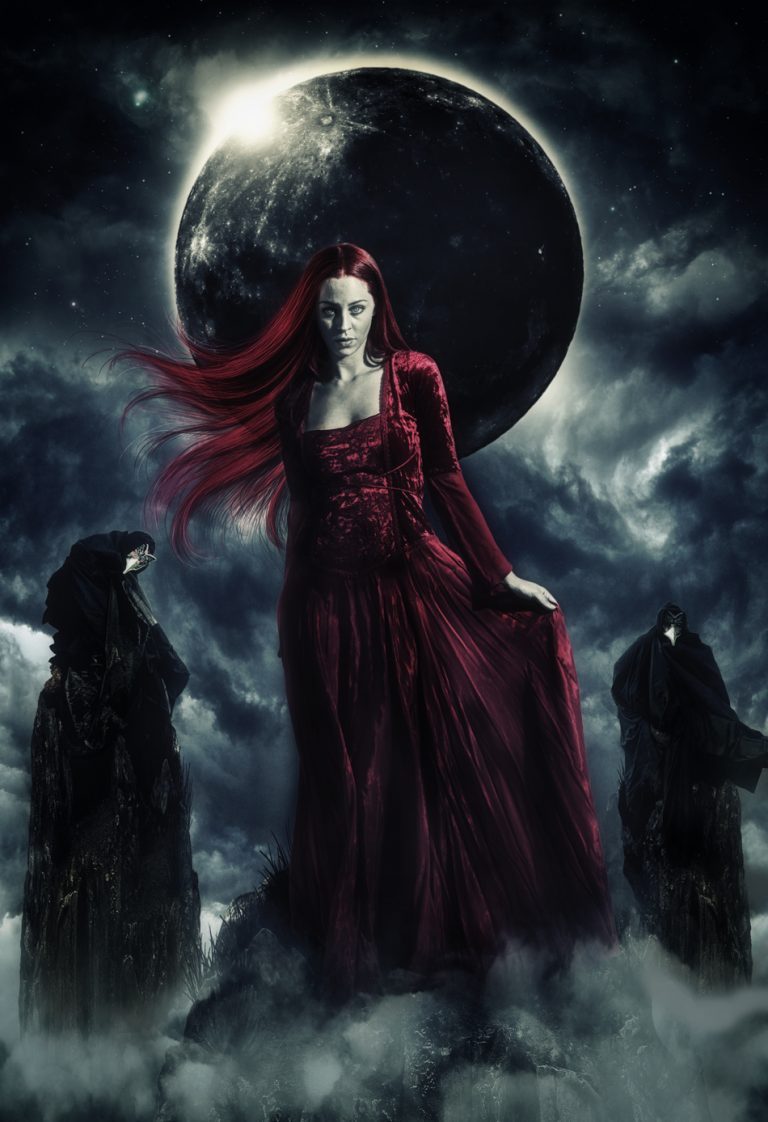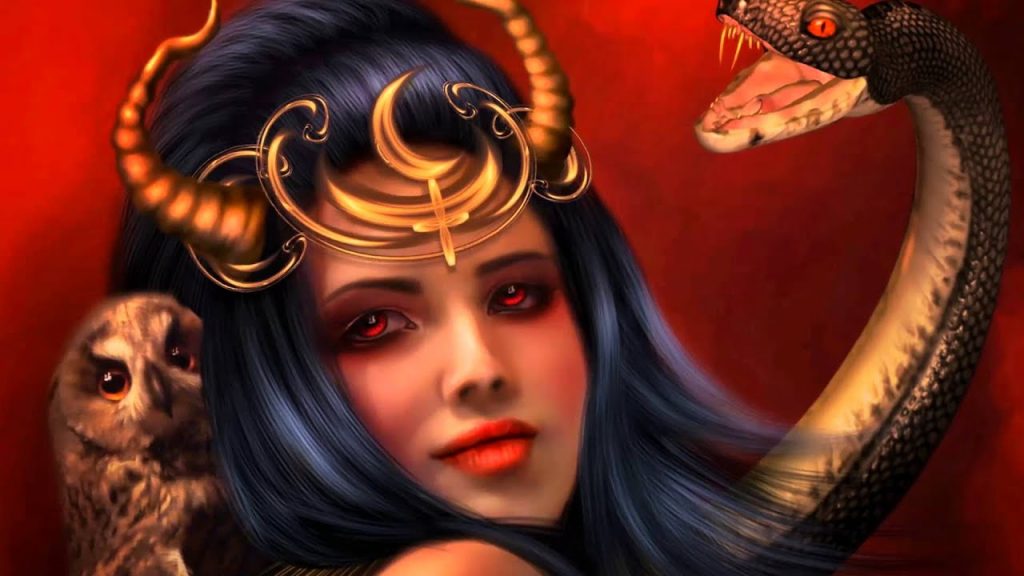Lilith is a figure in Jewish mythology, developed earliest in the Babylonian Talmud. Lilith is often envisioned as a dangerous demon of the night, who is sexually wanton, and who steals babies in the darkness. Lilith may be linked in part to a historically earlier class of female demons in ancient Mesopotamian religion, found in cuneiform texts of Sumer, the Akkadian Empire, Assyria, and Babylonia.
In Jewish folklore, from the Alphabet of Sirach, Lilith appears as Adam’s first wife, who was created at the same time and from the same clay as Adam—compare Genesis 1:27. This contrasts with Eve, who was created from one of Adam’s ribs: Genesis 2:22. The legend developed extensively during the Middle Ages, in the tradition of Aggadah, the Zohar, and Jewish mysticism. For example, in the 13th-century writings of Isaac ben Jacob ha-Cohen, Lilith left Adam after she refused to become subservient to him and then would not return to the Garden of Eden after she had coupled with the archangel Samael.
Interpretations of Lilith found in later Jewish materials are plentiful, but little information has survived relating to the Sumerian, Akkadian, Assyrian and Babylonian view of this class of demons. While the connection is almost universally agreed upon, recent scholarship has disputed the relevance of two sources previously used to connect the Jewish lilith to an Akkadian lilītu—the Gilgamesh appendix and the Arslan Tash amulets. “Other scholars, such as Lowell K. Handy, agree that Lilith is derived from Mesopotamian demons but argue against finding evidence of the Hebrew Lilith in many of the epigraphical and artifactual sources frequently cited as such the Sumerian Gilgamesh fragment, the Sumerian incantation from Arshlan-Tash.



In Hebrew-language texts, the term lilith or lilit translated as “night creatures”, “night monster”, “night hag”, or “screech owl” first occurs in a list of animals in Isaiah 34:14, either in singular or plural form according to variations in the earliest manuscripts. In the Dead Sea Scrolls 4Q510-511, the term first occurs in a list of monsters. In Jewish magical inscriptions on bowls and amulets from the 6th century CE onwards, Lilith is identified as a female demon and the first visual depictions appear.
The resulting Lilith legend continues to serve as source material in modern Western culture, literature, occultism, fantasy, and horror.
The spirit in the tree in the Gilgamesh cycle
Samuel Noah Kramer (1932, published 1938) translated ki-sikil-lil-la-ke as Lilith in “Tablet XII” of the Epic of Gilgamesh dated c.600 BCE. “Tablet XII” is not part of the Epic of Gilgamesh, but is a later Assyrian Akkadian translation of the latter part of the Sumerian Epic of Gilgamesh. The ki-sikil-lil-la-ke is associated with a serpent and a zu bird. In Gilgamesh, Enkidu, and the Netherworld, a huluppu tree grows in Inanna’s garden in Uruk, whose wood she plans to use to build a new throne. After ten years of growth, she comes to harvest it and finds a serpent living at its base, a Zu bird raising young in its crown, and that a ki-sikil-lil-la-ke made a house in its trunk. Gilgamesh is said to have killed the snake, and then the zu bird flew away to the mountains with its young, while the ki-sikil-lil-la-ke fearfully destroys its house and runs for the forest. Identification of ki-sikil-lil-la-ke as Lilith is stated in Dictionary of Deities and Demons in the Bible (1999). According to a new source from Late Antiquity, Lilith appears in a Mandaic magic story where she is considered to represent the branches of a tree with other demonic figures that form other parts of the tree, though this may also include multiple “Liliths”.
Suggested translations for the Tablet XII spirit in the tree include ki-sikil as “sacred place”, lil as “spirit”, and lil-la-ke as “water spirit”. but also simply “owl”, given that the lil is building a home in the trunk of the tree.
A connection between the Gilgamesh ki-sikil-lil-la-ke and the Jewish Lilith was rejected by Dietrich Opitz (1932)
